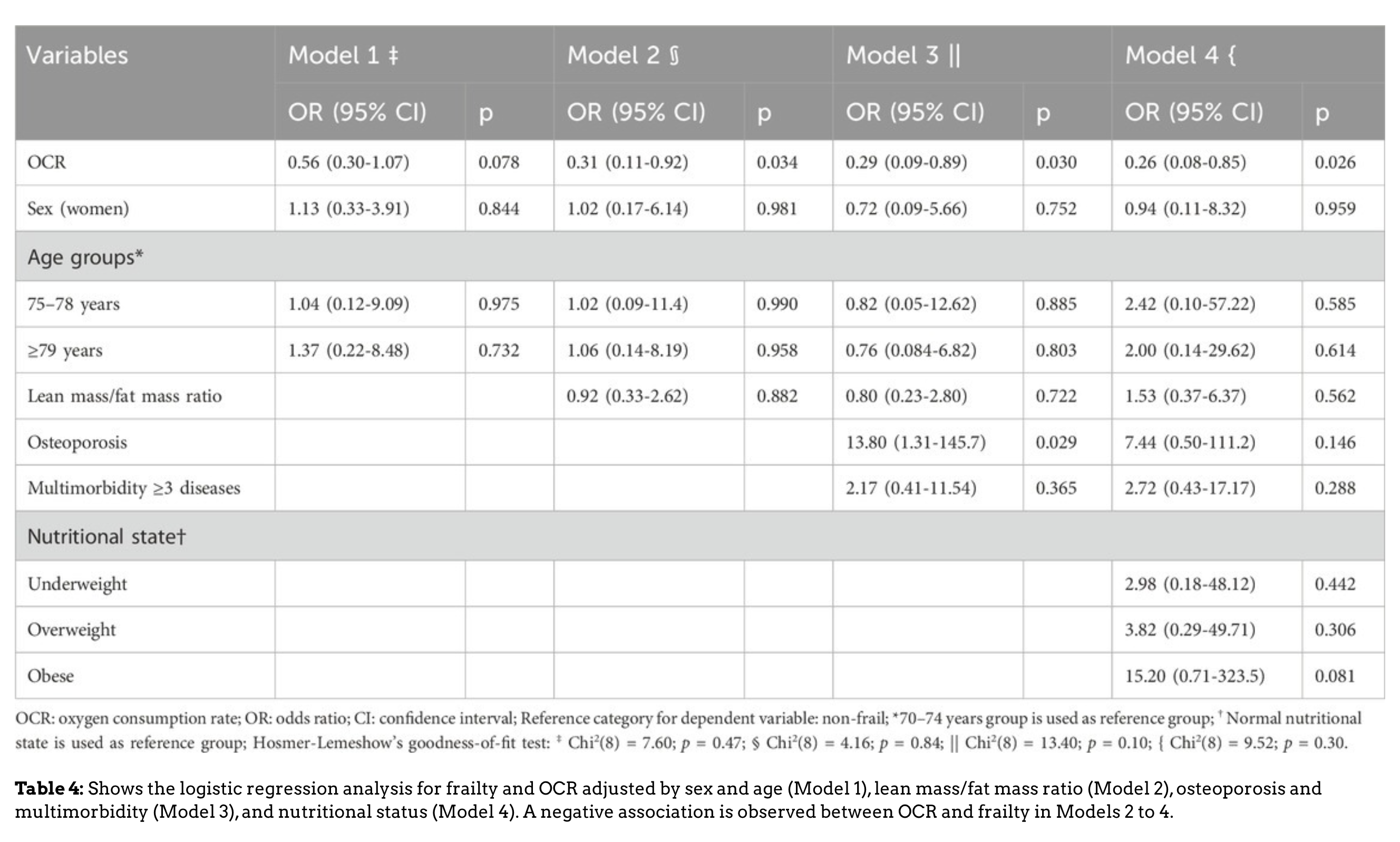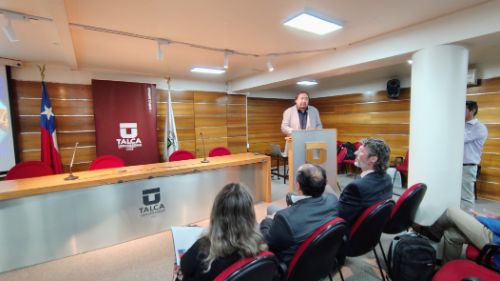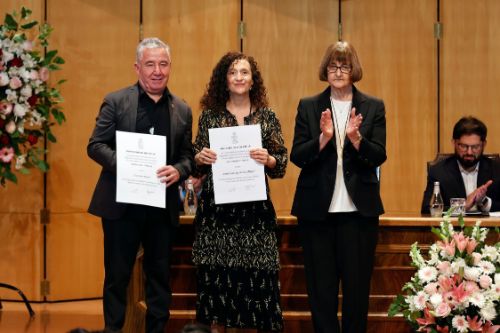A recent study published in Frontiers in Cell and Developmental Biology, titled “Decreased mitochondrial respiration associates with frailty in community-dwelling older adults” (DOI: 10.3389/fcell.2024.1301433), presents a new perspective on how to diagnose and understand frailty in older adults, based on a cellular indicator: mitochondrial respiration in peripheral blood mononuclear cells (PBMCs).
This work opens a promising pathway for the early detection of this geriatric syndrome, which affects a growing proportion of the aging population. The lead author is Gianella Liabeuf, then a student in the Doctorate in Nutrition and Food (DOCNUTAL) program, and it was developed by researchers from the Institute of Nutrition and Food Technology (INTA) at the University of Chile, in collaboration with the Faculty of Chemical and Pharmaceutical Sciences, the Faculty of Medicine at the University of Chile, the University of the Americas, the Bernardo O’Higgins University, and the Interuniversity Center for Healthy Aging.
“Frailty corresponds to a greater susceptibility to negative health outcomes: for example, if a frail person becomes ill, it is more likely that the illness will be severe, unlike a robust person who is more likely to experience a milder illness,” explains Roberto Bravo-Sagua, a professor at INTA, PhD in Biochemistry, and one of the study's authors.
According to the researcher, cellular metabolism can act as a reflection of that robustness or frailty. “Cellular metabolism reflects our biological age. This means that we may have a certain chronological age (years of life), but our body may have a younger or older biological age. That is, our cells may be younger if we have experienced 'successful' aging, or more aged if we have been affected by negative factors.”
The study was conducted in 58 older adults aged 70 and above, part of the ALEXANDROS cohort (a cohort under study for over 20 years at INTA, University of Chile), and revealed that frail individuals showed significantly lower mitochondrial oxygen consumption rates (OCR), particularly in men and in those over 80 years of age. “It’s true that frailty is traditionally easy to assess and does not require complex tests. However, this study opens the possibility of obtaining a new diagnostic parameter for frailty, with the potential of gaining predictive value. That is, to detect the early stages of frailty development before it manifests clinically.”
One of the points addressed by the study was the relationship between frailty and nutritional status, without finding statistically significant associations. However, Bravo-Sagua warns that this could change with a larger dataset: “Indeed, no significant association was detected between PBMC respiration and frailty according to nutritional status. However, this may be due to the need to conduct the study with a larger sample size. The data (Table 4 of the study) show a trend suggesting that obesity is substantially associated with frailty. This is because obesity is known to cause accelerated aging.”

Another interesting observation from the research is the difference by sex. While frail men showed a marked decline in mitochondrial capacity, no similar pattern was observed in women. “It is well known that women live longer than men. This is believed to be due to a protective effect of estrogens, which also stimulate mitochondrial metabolism. After menopause, this protection is lost and women’s health declines. In our study, the more pronounced drop in OCR among men could be due to the fact that women’s mitochondria have been exposed to estrogen signaling for decades (pre-menopause), which may make their mitochondria more 'robust' despite the presence of frailty. And this, precisely, could indicate that, in terms of mechanisms, mitochondrial dysfunction may not be the underlying cause of frailty in women, but rather some other pathway, such as telomere shortening or chronic inflammation, to name a couple.”
Finally, Professor Bravo-Sagua emphasizes a key point: aging is not only chronological, it is also biological and is influenced by multiple factors. “Regarding chronological versus biological age, those factors that reduce biological age are called 'geroprotectors'. Examples of these include wearing sunscreen, exercising, sleeping well, eating in moderation, and consuming fruits and vegetables. In contrast, those that increase our biological age are called 'gerontogens'. Examples of these are obesity, smoking, psychological stress, environmental pollution, consumption of ultra-processed foods, and a sedentary lifestyle.”
Keywords: mitochondria, respiration, frailty, PBMC, aging





-3.png.png)
